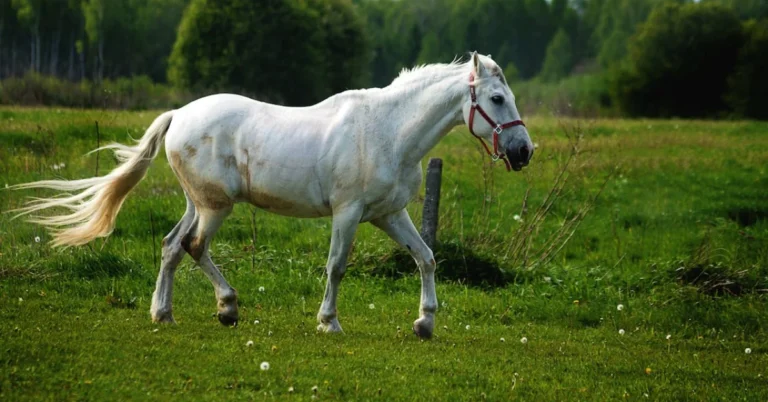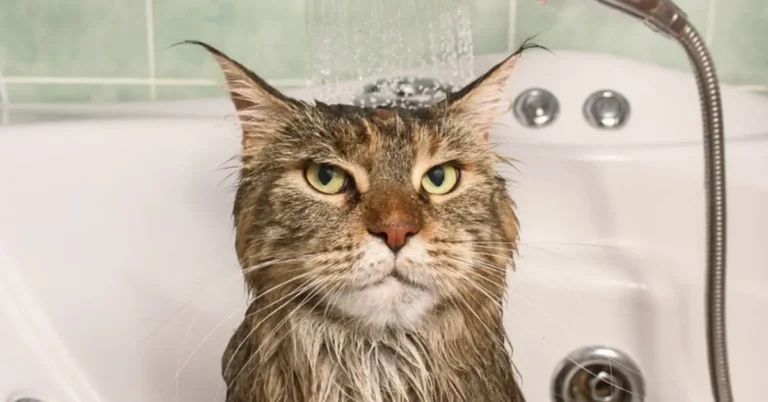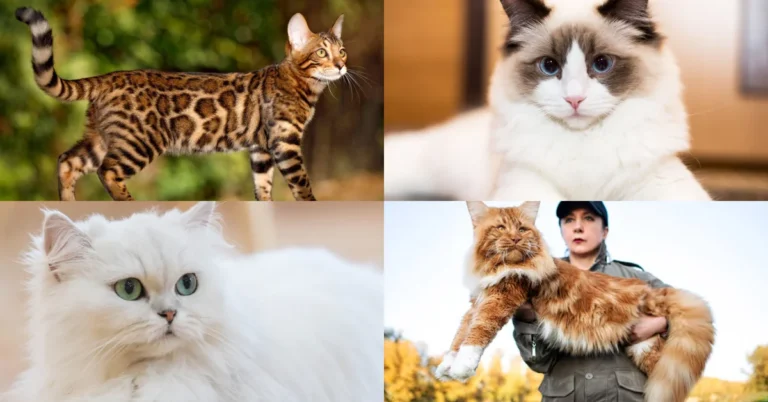How to Train a Horse Building a Lasting Partnership
Horses captivate us with their beauty, power, and spirit. Yet beneath their imposing exterior lies incredible potential—the potential for forging a deeply rewarding partnership through proper training. Whether the pure delight of the trail or the rush of competition is what inspires you, understanding equine behavior and psychology is the first step in transforming an untamed horse into a trusting companion.
In this comprehensive guide, we’ll explore the intricacies of horse training, from foundational groundwork to specialized riding disciplines. You’ll gain invaluable insight into your horse’s worldview, how to motivate them through positive reinforcement, and techniques for addressing common challenges.
With patience and compassion as your guiding principles, you’ll be well on your way to establishing a connection far more profound than handler and subject—but rather, of two spirits aligning in mutual understanding.
Laying the Groundwork: Earning Your Horse’s Trust
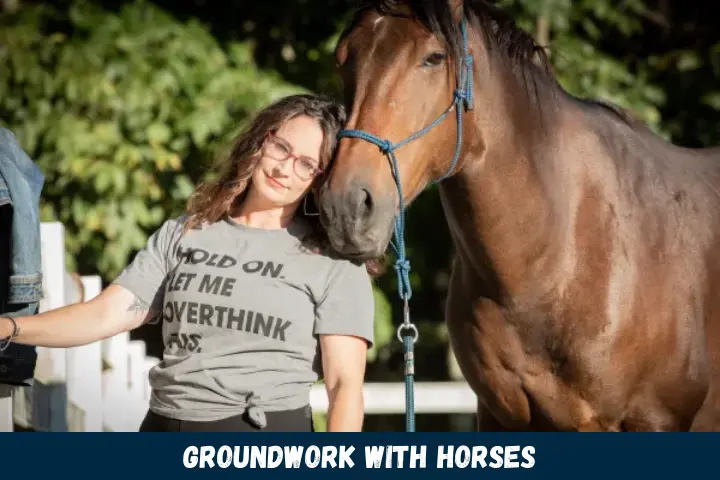
Long before saddling up and riding out, establishing trust and communication on the ground paves the way for success. Groundwork refers to all the foundational interactions, training, and handling done from the ground, not the saddle. Mastering groundwork teaches horses to see their handlers as worthy, benevolent leaders, making them more receptive to guidance under saddle.
Here are some of the critical aspects of groundwork:
Imprint Training
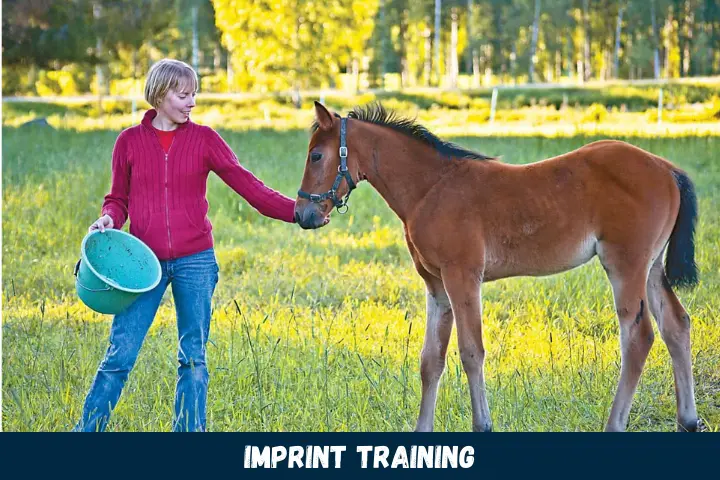
For newly acquired horses, imprint training in the critical first days and weeks of life kickstarts the bonding process. Gentle but deliberate touching and handling of the foal accustoms them to human interaction. Handlers gently restrain the foal just long enough for them to submit without fear or force. These short sessions foster trust in humans from an early age.
Haltering and Leading
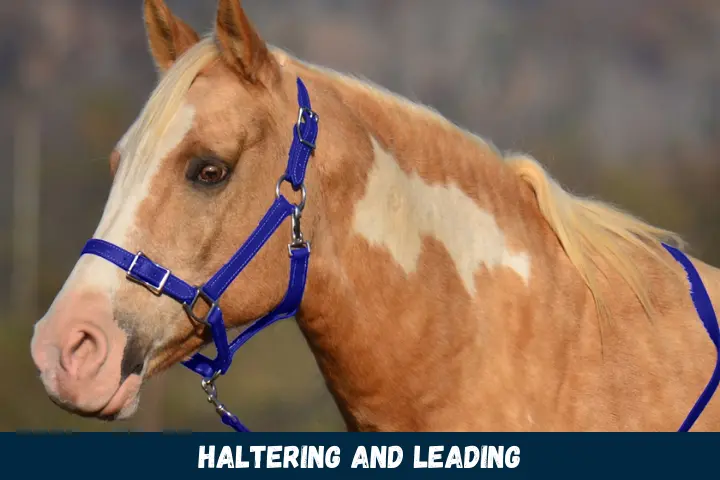
Teaching horses to easily halter, lead, and tie are essential introductory lessons. With a loose lead rope attached, handlers apply steady pressure behind the ears to tilt the horse’s head down. Immediately releasing pressure the moment they lower their head rewards the desired response. Pairing this technique with verbal commands like “lower” helps reinforce the lesson.
Yielding to Pressure

Pressure and release train horses to yield their shoulders, hips, legs, and body away from light pressure. For example, gently squeezing a foreleg teaches the horse to pick it up; instantly releasing teaches them lifting the leg makes pressure stop. This “ask, release, reward” method is the cornerstone of the groundwork.
Desensitization
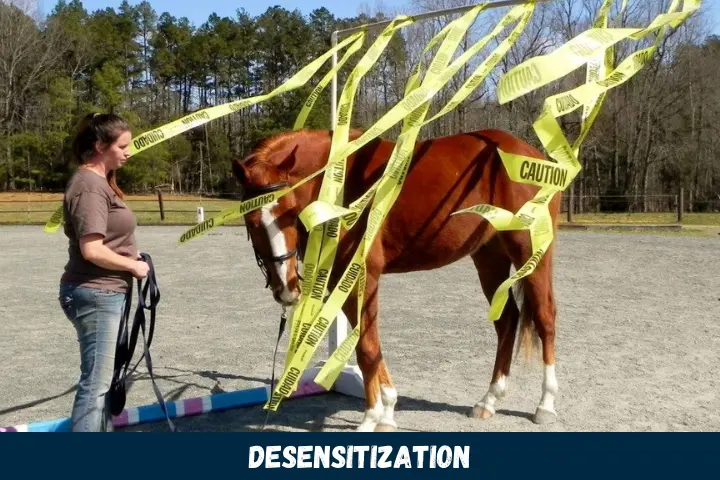
Getting horses comfortable with potentially frightening stimuli like loud noises, strange objects, vehicles, or wildlife is called “bombproofing.” Methodically exposing horses to these stressors in incremental steps while rewarding calm behavior builds their confidence. This step is crucial for activities like trail riding or working around noisy areas.
Standing Patiently
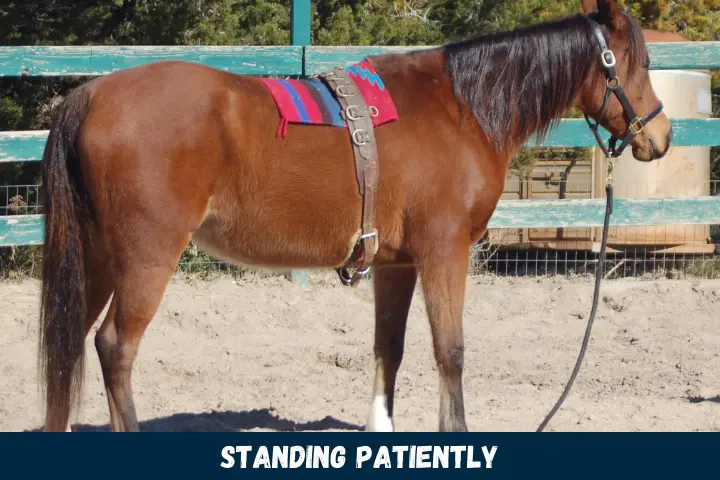
Teaching horses patience helps keep them—and their handlers—safe when tacking, mounting, or just relaxing together. With the lead rope loose, handlers wait until their horse stands quietly, then instantly reward it with praise or scratch on the withers. Gradually asking for longer durations builds tolerance for inaction.
As you transport these groundwork skills to the saddle through lunging and longeing training, your horse’s education continues. But groundwork always remains an integral tool for reinforcing the leadership and trust dynamic central to your bond.
Understanding Equine Psychology
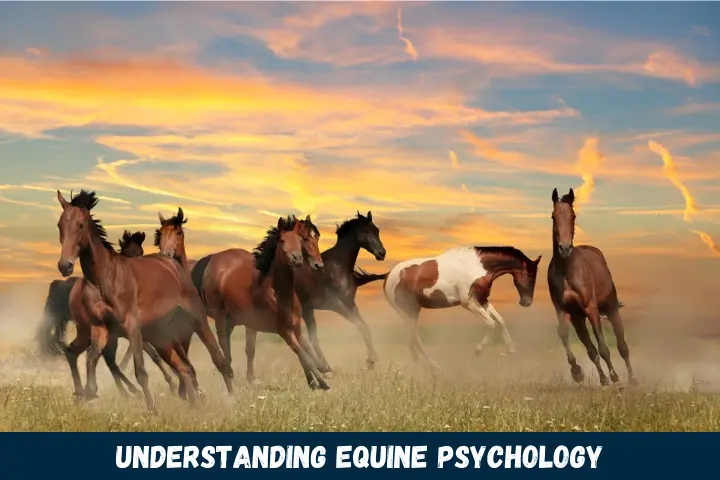
Beneath their imposing and powerful physique, horses are animals of instinct shaped by evolution as prey. Several key facets of their psychology impact training. Understanding your horse’s inner mental world better equips you to lead them with empathy.
As herd creatures, horses constantly evaluate hierarchical dynamics within their band, following dominant members for guidance. Mirroring herd structure, assertive yet benevolent handlers tap into this instinctual need to follow trusted leadership.
As prey animals, horses’ first imperative is self-preservation. Their wide-angle vision detects threats, while hyperactive nervous systems compel them to flee. But as naturally curious creatures, their impulse to explore often competes with wariness. This balancing act profoundly influences trainability.
Cognitively and emotionally, horses live in the present moment, less bound by the past or future. While this grants them tremendous presence, it also means negative associations fade quickly if handlers redirect them skillfully. Harnessing this in-the-moment mindset allows training sessions to stay positive.
Understanding your horse’s needs, instincts and emotions unlocks their potential. Good training leverages horses’ attributes while compassionately coaching them through limitations imposed by their evolution.
Motivating with Positive Reinforcement
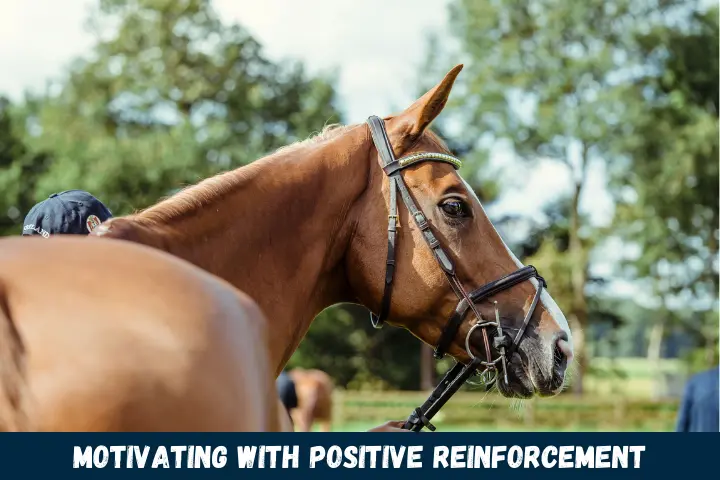
All equine training methods leverage learning theory principles to influence horses’ behavior. Arguably no principle has transformed horse training more profoundly than positive reinforcement. This approach eschews outdated coercive techniques in favor of encouragement, reward, and most importantly—understanding.
While negative reinforcement employs pressure or punishment to discourage unwanted behaviors, positive reinforcement rewards desired behavior instead. Something your horse wants—food treats, praise, affection—is delivered as soon as they demonstrate the smallest step toward the behavior. This powerfully motivates horses to actively participate in their training by tying cooperation to instant gratification.
Executed artfully, positive reinforcement taps into your horse’s food-motivation pathway. Neurochemical signals like dopamine flood their system when you affirm their progress with snacks or verbal praise—the equine equivalent of getting paid. In consistently rewarding tries over successes alone, horses gain intrinsic enjoyment from engaging with handlers.
This cycle of motivation builds horses’ confidence and trust while deepening your interspecies connection. Humans gain leadership status not through intimidation but benevolence. And “asks” become collaborative conversations, not non-negotiable decrees.
While more complex or ingrained behaviors may still benefit from corrections, positive reinforcement should form the bedrock of your partnership.
Establishing the Foundation Under Saddle
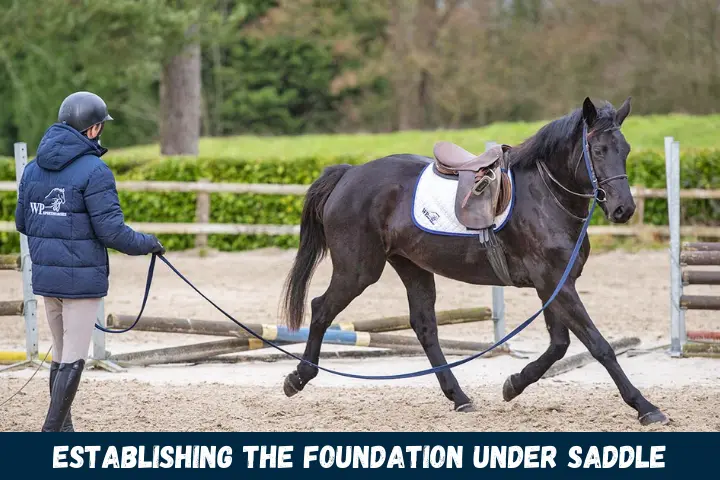
Once groundwork lays a solid foundation of leadership and trust, advancing to ridden work can begin. Now the dance between horse and human grows exponentially more intricate, requiring stellar communication and sensitivity from riders.
Saddling and Bridling
Gradual acclimation to equipment helps ensure your horse’s comfort. Leave gear nearby so they associate it with you, not fear, by sniffing and exploring it. Next, rest equipment on their back briefly before fastening any buckles, rewarding patience and calmness throughout. Slow, soothing speech and generous scratches over nervous body language cultivate confidence in your horse.
Mounting
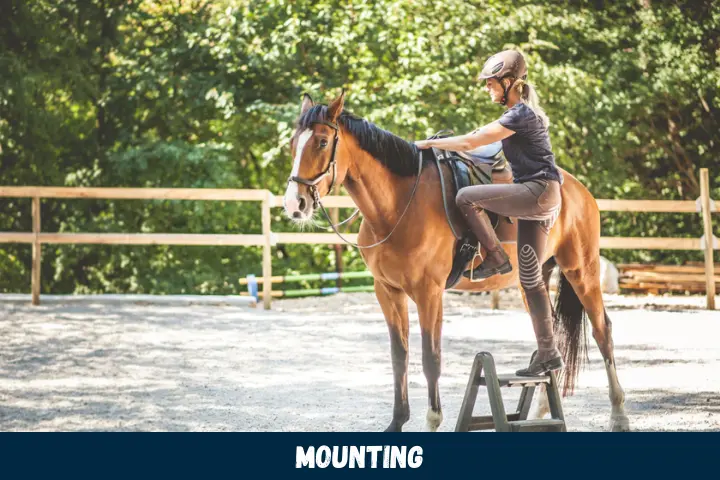
Teach your horse to stand “rock solid” for mounting through repetition and positive reinforcement. With reins gathered to prevent sudden movement, have an assistant stabilize and praise your horse as you gently lean weight into the stirrup and across their back. Keep sessions very short initially, asking for longer durations gradually as your horse relaxes into the process.
Riding in the Round Pen
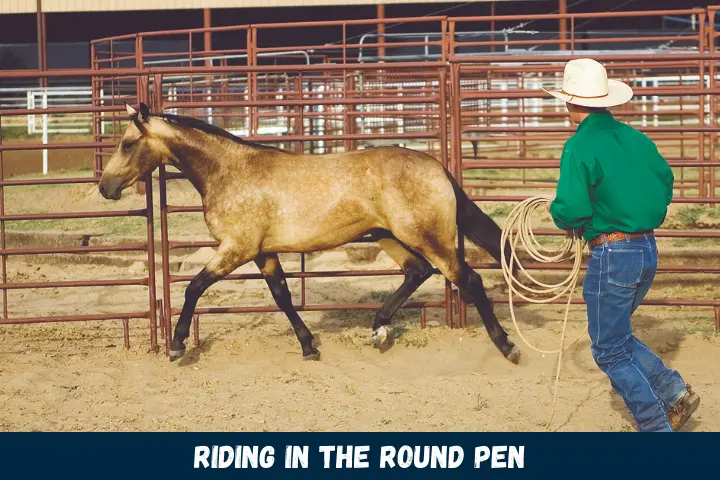
Lunging your horse at various gaits in a round pen helps establish steering, verbal, and weight cues before adding environmental stimuli. Work both directions, asking for changes of gait and direction with clear aids. Reward tries by allowing free, relaxed movement on a loose line. Solidify steering by driving energy back into your core if your horse ignores leg or weight signals. Your leadership and coordination should feel harmonious, not confrontational.
With these fundamentals instilled through many short positive sessions, your horse shoulders the responsibilities of riding work willingly, not begrudgingly. While challenges will arise later, your early investment in communication and trust prevents small issues from escalating.
Navigating Common Training Roadblocks
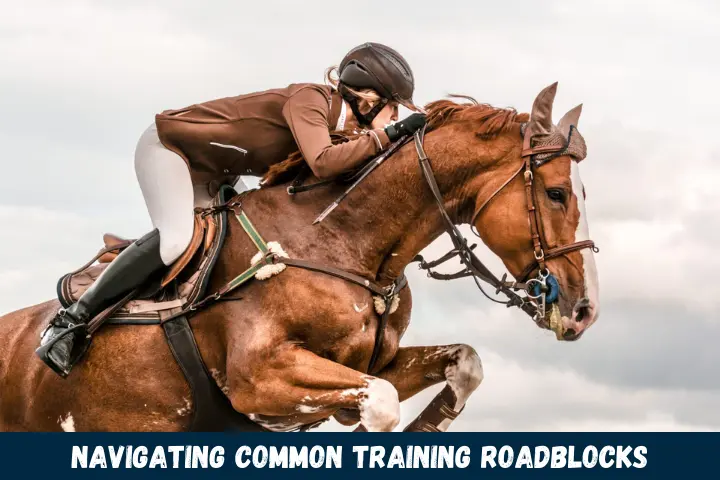
In applying learning theory, predictable patterns emerge in horses’ development. Understanding common mental and behavioral roadblocks that manifest along the training journey can help you course-correct skillfully.
Here are constructive solutions to some frequent sticking points:
My Horse Won’t Stand Still for Tacking & Mounting
Why it happens: Standing still unnerves horses since movement reduces anxiety by giving them some sense of control. Plus mounting creates startling new sensations.
The Fix:
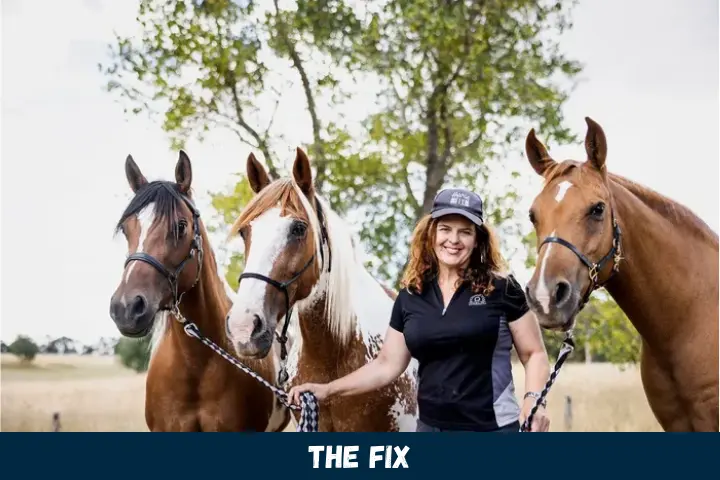
Set them up for success by practicing standing still through positive reinforcement in short sessions. Gradually build duration. Teach the verbal “whoa” and “stand” aids through groundwork. While mounted, relax your posture to radiate calm assurance. My Horse Misbehaves When I Mount
Why it happens:
Discomfort, impatience, or poor prior associations cause some horses to walk off or spook upon mounting.
Specializing Your Training:

Preparing for Specific Disciplines While foundational training establishes an attentive, trusting mount, specialized training tailored to your riding goals takes your partnership to the next level. The world of horses offers endless avenues for channeling your horse’s potential through focused training techniques.
Whether your sights are set on the thrilling turns of barrel racing or the finessed movements of dressage, optimizing your training around a discipline creates opportunities to showcase your horse’s aptitudes and build stronger communication rooted in a shared purpose.
Let’s explore techniques for preparing horses for several popular disciplines:
Competition Trail Riding
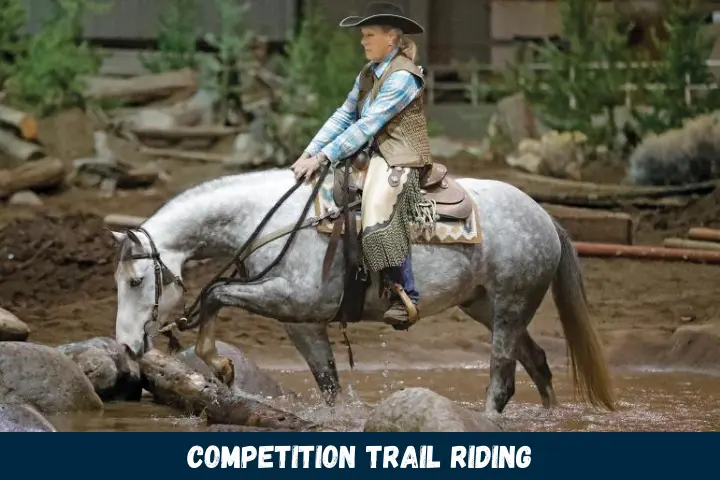
This technical discipline tests you and your horse’s flexibility and responsiveness in navigating obstacles like bridges, water hazards, narrow passages, and more at pace. Success requires agility, confidence, and precision handling from both partners.
Training Tips:
- Thoroughly desensitize your horse to walking over unusual surfaces or through tight spaces. Increasing exposure gradually is key. Reward any willing effort.
- Practice maintaining gaits over uneven terrain like ditches, rocks, or small jumps. Enthusiastically praise your horse for crossing unfamiliar elements.
- Set up a small trail course on your property with objects that mimic show-ring obstacles. Slowly increase the difficulty as your horse masters each skill.
The intensive bombproofing of the competition trail transforms the handler-horse dynamic into an intricately coordinated team poised to tackle any challenge with responsiveness and heart.
Barrel Racing
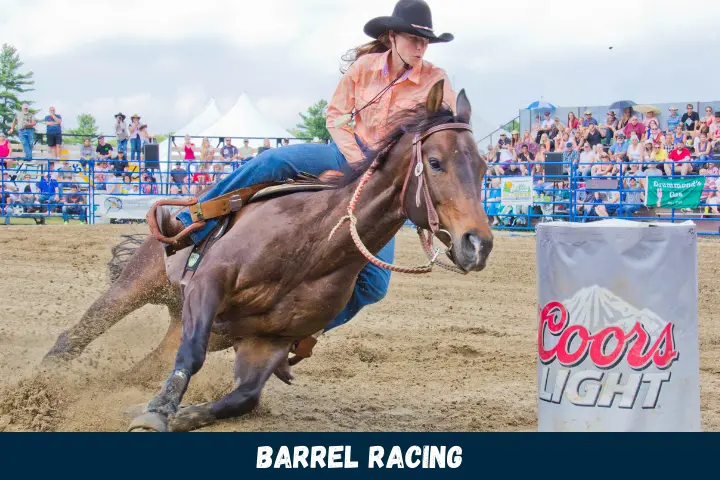
Showcasing speed, agility, and instantaneous horse-rider communication, barrel racing demands sharp hand-eye coordination. As you guide your horse through the cloverleaf pattern at a breakneck pace, finesse teamwork plays a bigger role than strength.
Training Tips:
- Condition your horse’s cardio and muscles for bursts of sprinting while also promoting flexibility through exercises like loose longeing.
- Drill the cloverleaf pattern at a walk and easy canter, emphasizing low head carriage and periods of straightness and collection to set up tight turns.
- Challenge your horse’s responsiveness to rein cues by varying pace and direction frequently. Two-tracking left and right in figures of eight further sharpens lateral flexion.
The thrilling dance of barrel racing distills horsemanship down to its essence: the harmonious convergence of human guidance and equine power into a single focused entity.
Dressage
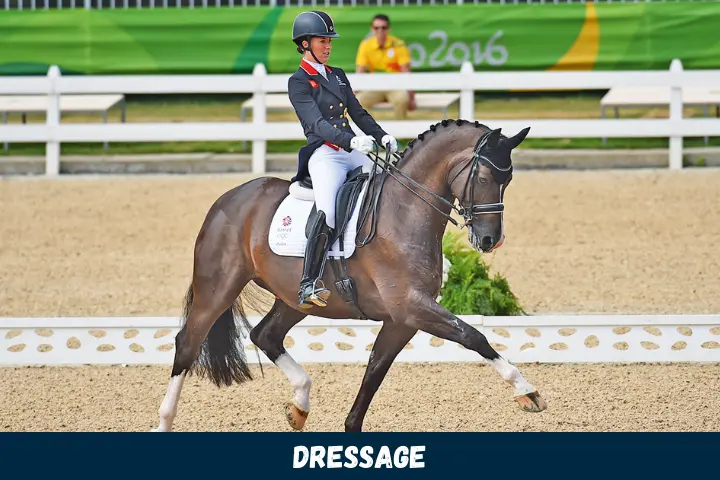
Ballet on horseback, classical dressage showcases the pinnacle of fluid grace and attunement possible between human and horse. Each test highlights the horse’s strength, flexibility, and responsiveness to nearly invisible physical cues as you guide them through intricate patterns of circles, lateral moves, and transitions between collected paces.
Training Tips:
- Suppleness and engagement of the hindquarters are precursors to the collection, so incorporate lots of lateral stretches, leg yield exercises, transitions, and circles at the halt to your foundation work.
- Help your horse differentiate between your subtle seat, leg, and rein cues through clear signaling. For example, exaggerate the lifting of your heel for upward transitions.
- Insist on the immediacy of responses early on, as delayed reactions pose challenges in executing technically demanding tests.
Final Thoughts
Dressage spotlights the poetry, depth, and nuance possible in cross-species communication when both partners remain open, focused learners.
The specialized skills required by competition horses represent just a fraction of the possibilities. From rodeo events like roping to equine therapy certifications, horses and willing human partners can find meaningful purpose across an incredible range of pursuits. Your role as a trainer then focuses on nurturing and shaping your horse’s innate abilities to align with your aspirations.


